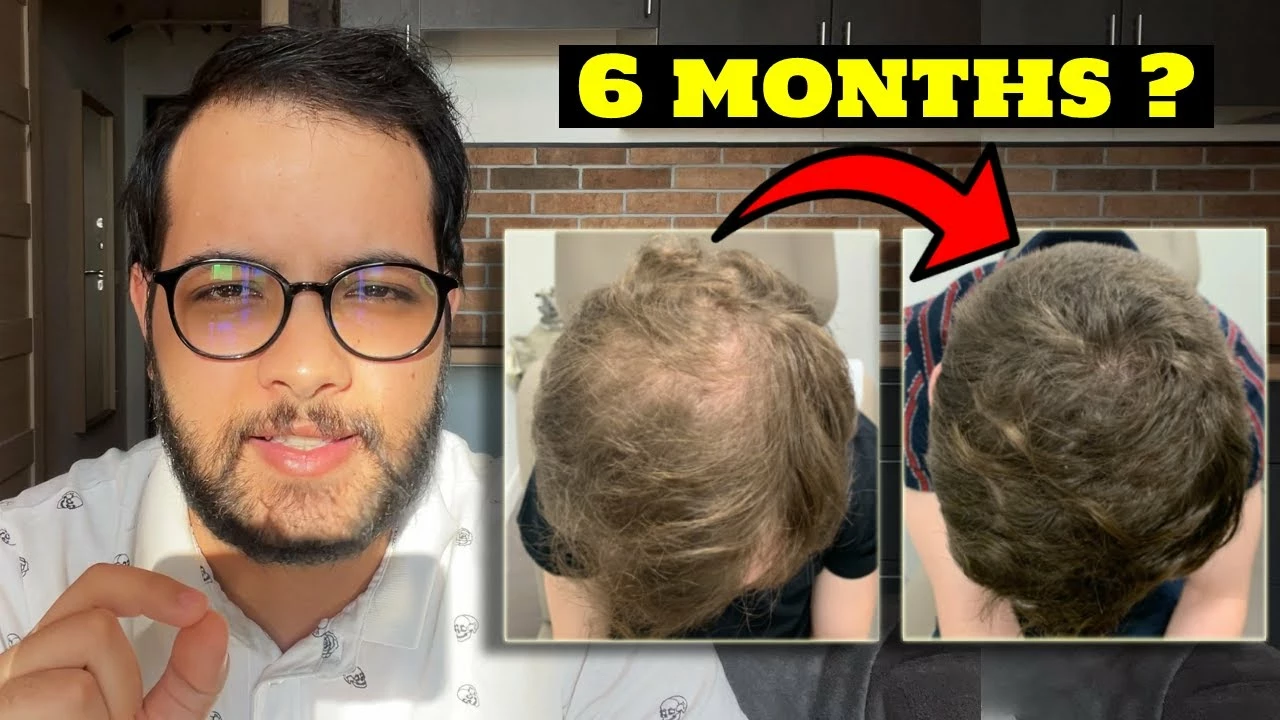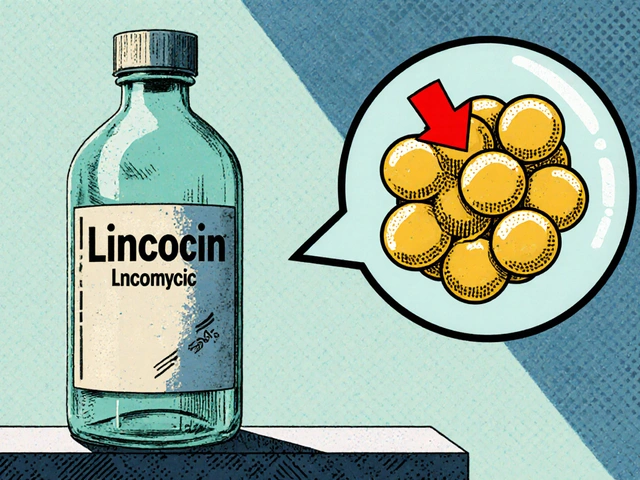Introduction to Androgenic Alopecia in Athletes
As an athlete, I've always been conscious of my physical appearance and health. One aspect of this is hair loss, which can be a major concern for many athletes, especially those who are experiencing androgenic alopecia. In this article, we will explore the causes of androgenic alopecia and hair loss in athletes, as well as discuss potential solutions to help manage and prevent this condition from worsening. So, let's dive in and learn more about this common issue affecting athletes from all walks of life.
Understanding Androgenic Alopecia and Hair Loss
Androgenic alopecia, also known as male or female pattern baldness, is a genetic condition that affects both men and women. It results in the thinning and loss of hair, typically beginning at the temples and crown of the head. The main culprit behind this condition is the hormone dihydrotestosterone (DHT), which binds to hair follicles, causing them to shrink and eventually stop producing hair. As athletes, we might be at an increased risk of experiencing hair loss due to various factors such as hormonal changes, stress, and poor nutrition.
Factors Contributing to Hair Loss in Athletes
1. Hormonal Imbalances
As athletes, we often undergo intense training regimens that can cause hormonal fluctuations. These fluctuations, particularly in testosterone and DHT levels, can contribute to androgenic alopecia. It is essential to monitor our hormone levels and consult with a healthcare professional if we suspect any imbalances that might be causing hair loss.
2. Physical and Emotional Stress
Intense physical activity and the emotional stress that comes with competing in sports can lead to hair loss. When our bodies are under stress, they produce cortisol, which can disrupt the hair growth cycle and lead to hair shedding. It's important for us athletes to find ways to manage stress effectively and prioritize self-care in our routines.
3. Poor Nutrition
A well-balanced diet is crucial for maintaining healthy hair growth. As athletes, we may be at risk of nutrient deficiencies due to strict diets, intense training, and the increased demand for energy. Ensuring we consume adequate amounts of vitamins, minerals, and proteins can help support healthy hair growth and prevent hair loss.
4. Use of Steroids and Performance Enhancing Drugs
Some athletes may resort to using steroids or performance-enhancing drugs, which can have serious side effects, including hair loss. These substances can increase DHT levels, leading to androgenic alopecia. It is essential for us to be aware of the potential consequences of using these substances and consider safer alternatives to improve our athletic performance.
Solutions for Managing Androgenic Alopecia in Athletes
1. Topical Treatments and Medications
There are several FDA-approved treatments available for managing androgenic alopecia, such as minoxidil and finasteride. These medications work by blocking DHT production or promoting hair growth. It's crucial to consult with a healthcare professional before starting any treatment to ensure it's appropriate for our specific situation and to monitor progress and potential side effects.
2. Nutritional Supplements
As athletes, we can benefit from incorporating nutritional supplements into our routine to support healthy hair growth. Supplements containing biotin, zinc, iron, and other essential nutrients can help address any deficiencies that might be contributing to hair loss. However, it's important to consult with a healthcare professional before starting any supplementation to ensure it's suitable for our needs.
3. Stress Management Techniques
As mentioned earlier, stress can play a significant role in hair loss. Incorporating stress management techniques such as meditation, yoga, and deep breathing exercises can help reduce cortisol levels and support overall well-being, which can positively impact hair growth.
4. Maintaining a Healthy Diet
Ensuring we consume a well-balanced diet rich in vitamins, minerals, and proteins is essential for supporting healthy hair growth. Incorporating foods such as lean meats, fish, nuts, seeds, and leafy greens can provide the necessary nutrients our bodies need to maintain healthy hair and prevent hair loss.
Conclusion
Androgenic alopecia and hair loss can be a concern for many athletes, but by understanding the causes and implementing effective solutions, we can manage and prevent this condition from worsening. Remember, it's essential to consult with a healthcare professional before starting any treatment or supplementation to ensure it's appropriate for our specific needs. As athletes, we must prioritize our overall health and well-being, including the health of our hair.







14 Comments
Roshin Ramakrishnan May 6, 2023
Hey there, fellow athlete, I totally get how frustrating hair loss can feel, especially when you’re training hard, juggling nutrition, and trying to stay on top of your game, so let’s look at a few practical steps together, first, consider a balanced diet rich in biotin and zinc, second, manage stress with regular stretching or meditation, and third, keep an eye on any steroid use, because even occasional supplements can tip hormone levels, remember, you’re not alone, and we can support each other through this journey!
Todd Peeples May 6, 2023
From a physiological standpoint, androgenic alopecia in athletes can be attributed to elevated dihydrotestosterone (DHT) activity, which is often exacerbated by hypercatabolic states induced by intensive training regimens; furthermore, micronutrient deficiencies, particularly in iron and zinc, can impair follicular metabolism, thereby accelerating telogen effluvium. It is advisable to consult an endocrinologist to assess hormonal panels and consider evidence‑based interventions such as finasteride or topical minoxidil, while maintaining a protocoled nutritional regimen. 📈😊
Chris Smith May 6, 2023
Wow, another miracle cure, guess the answer was hiding in protein shakes all along.
Leonard Greenhall May 6, 2023
The data on steroid‑induced hair loss is well documented; a review of peer‑reviewed studies indicates a statistically significant correlation between exogenous anabolic androgenic steroid use and increased DHT levels, which precipitate follicular miniaturization. It is essential to weigh performance benefits against dermatological side effects, and to seek alternatives that do not compromise hair health.
Abigail Brown May 6, 2023
When I first stepped onto the track, my hair was a crown of confidence that swayed with each stride.
But as the seasons changed and the pressure intensified, I noticed a thinning that mirrored the wear of countless miles.
The first sign was a subtle whisper of shedding after a grueling interval session, a reminder that my body was pushing limits beyond its comfort zone.
I learned that stress, both mental and physical, releases cortisol, which can hijack the hair growth cycle and send follicles into a premature resting phase.
Nutrition, too, became a cornerstone, for without sufficient biotin, iron, and essential fatty acids, my scalp struggled to rebuild the strands that were lost.
I consulted a sports physician who explained that DHT, the notorious derivative of testosterone, binds stubbornly to hair follicles, shrinking them like a wilting plant under harsh sun.
Together, we crafted a plan that blended low‑dose finasteride with a diet rich in leafy greens, salmon, and nuts, hoping to nourish the cells from within.
I also incorporated yoga and meditation, not as a fad, but as a disciplined practice to calm the nervous system, because a relaxed mind can reduce cortisol spikes.
Every morning, I apply a minoxidil solution, watching the tiny droplets coat my scalp like hopeful rain on parched earth.
Weeks turned into months, and I began to notice tiny sprouts emerging in the temple area, a sign that the follicles were awakening.
The journey taught me humility, as I realized that peak performance does not have to sacrifice personal aesthetics.
It reinforced the belief that holistic health-where hair, muscle, and mind are treated as an integrated whole-yields the most sustainable victories.
I now champion the message that athletes should monitor hormonal health as vigilantly as they track their split times.
By sharing my experience, I hope to illuminate the path for anyone wrestling with similar challenges.
Remember, resilience is not just about pushing harder; it’s also about listening, adapting, and nurturing every part of ourselves.
Crystal Slininger May 6, 2023
Everyone knows that the real cause of hair loss in athletes isn’t just DHT, it’s the hidden chemicals in the supplements that big pharma doesn’t want you to see. The industry pushes synthetic nutrients that actually block natural follicle signaling, leading to rapid thinning. If you stick to whole foods, you’ll avoid the trap.
Sumeet Kumar May 6, 2023
It’s great that you’re looking into this, and remember that consistency is key; keep a balanced diet, stay hydrated, and consider a gentle scalp massage before workouts 😊.
Maribeth Cory May 7, 2023
Don’t let the fear of losing hair hold you back from training; take proactive steps like using a low‑dose finasteride, supplementing with zinc, and managing stress, and you’ll see progress both on the field and on the head.
andrea mascarenas May 7, 2023
Keep tracking your progress and adjust your routine as needed; a steady approach will pay off over time.
Vince D May 7, 2023
Stay hydrated and get enough sleep.
Camille Ramsey May 7, 2023
Yo, you’re misspellng “supplements” and ignoring the science-finasteride works if you use it right, stop the excuses.
Scott Swanson May 7, 2023
Sure, because ignoring proven treatments is the best way to win medals, right?
Karen Gizelle May 7, 2023
I find it disheartening that some athletes choose shortcuts that harm their bodies, especially when the consequences extend beyond performance. The ethical implications are clear: we owe it to ourselves and to role models to prioritize health over quick gains. Yet, I keep hearing excuses about “just this one cycle” and quick gains from illegal excersises. That mindset is irresponsible and reflects a deeper disrespect for personal well‑being. Let’s hold each other accountable and push for clean, sustainable training methods. Remember, integrity matters more than a fleeting look.
Stephanie Watkins May 7, 2023
I appreciate the thorough overview and would love to see more data on how different training intensities correlate with hormone fluctuations and hair health.